The Man-Made Mess of Meeker Slough
By Ryan Nakano and Jeni Schmedding
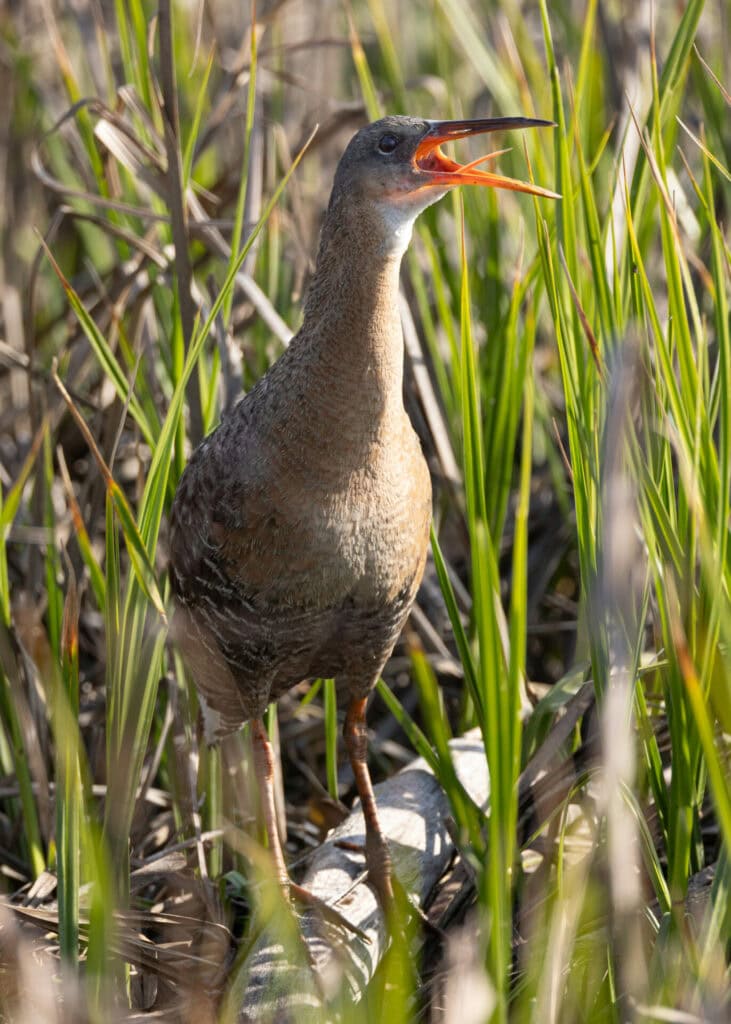
As the sky awakens at Meeker Slough, a beautiful array of colors backdrop the channeled saltwater marsh. The morning calls and the elusive and endangered Ridgway’s Rail respond with a round of applause, “Kek kek kek kek” as if to acknowledge each new dawn as nothing short of a miracle.
And in many ways it is a miracle for these olive-brown and cinnamon-colored hen-sized birds, skulking and skittering about, probing the mudflats with their lean orange beaks.
“Right here, where the bay meets the land and these tidal wetlands occur, that’s where the Ridgway’s Rails live and thrive,” wildlife biologist and Ridgways Rail Monitoring Manager Jen McBroom said. “Unfortunately, we’ve lost 85% of our tidal wetlands in the bay since we started developing these shoreline habitats.”

McBroom, who’s been officially monitoring the Ridgway’s Rail population with Olofson Environmental Inc. for the past decade, detected 17 rails in total with her team during this year’s most recent survey, making Meeker Slough and neighboring Stege Marsh, one of the densest Ridgways Rail habitat in the Bay Area.


For this reason, among many others, Meeker Slough on the southend of the Richmond shoreline, is a critically important place to protect, a place full of promise, full of hope, and unfortunately, full of trash.
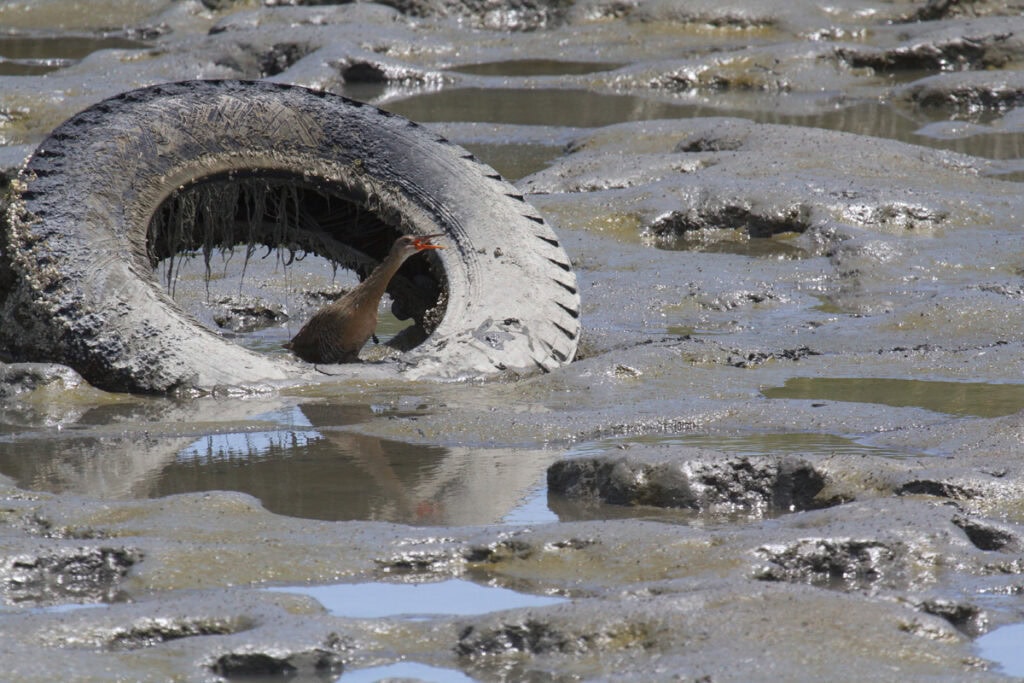
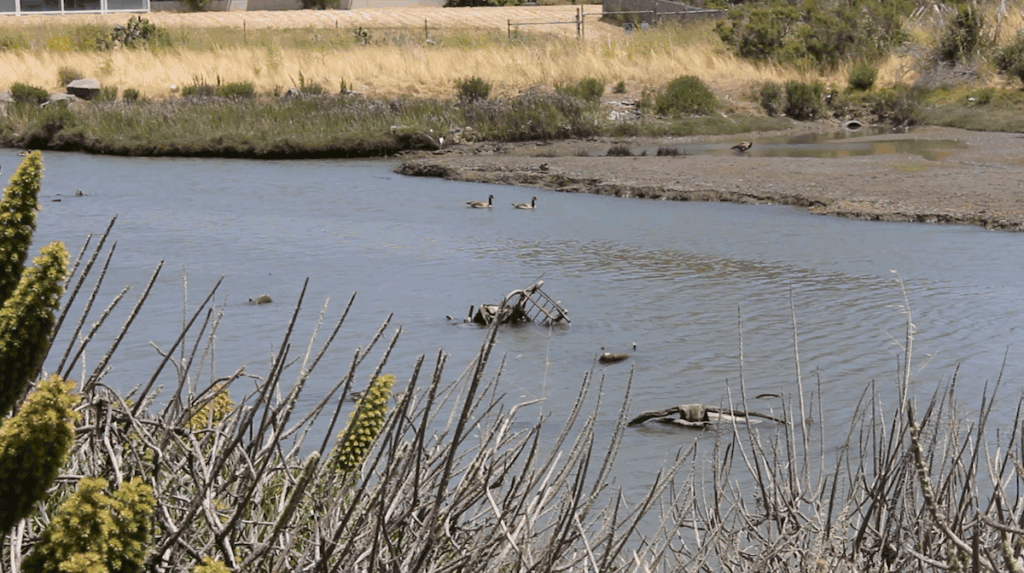
Among the rails, ducks, herons, and other wildlife, and below steady streams of cyclists, joggers, and dog walkers on the SF Bay trail, sit large truck tires, half-submerged shopping carts, and all matter of junk in the mudflats past the slough’s perimeter fence.
“There are people from everywhere who come here,” Fabian, a resident of the Marina Bay neighborhood, said. “It’s a beautiful park but we see big couches and trash. The residents here don’t know where it comes from. But if I could be a part of some nonprofit to help clean this place up I would.”
Fortunately for nearby residents, recreational users of the Bay trail, and the wildlife in Meeker Slough, the City of Richmond has a plan.
“We now have a contractor who can come in the beginning of September to clean up,” Richmond’s Deputy Director for Public Works Tawfic Halaby said.
In addition to the September clean up, the City of Richmond’s Public Works Department plans to hire a contractor for a period of three years to clean the slough twice a year before and after (Ridgway’s Rail) breeding season.
According to Halaby, while the city has historically taken part in cleanups in the past and worked to address the issue of trash by installing trash capturing devices at different entry points to the slough, city employees have never gone into the slough itself to remove large items and debris.
In fact, most, if not all clean up efforts at Meeker Slough have historically been relegated to the areas outside the protective fence and along the edges of the slough itself. Why?
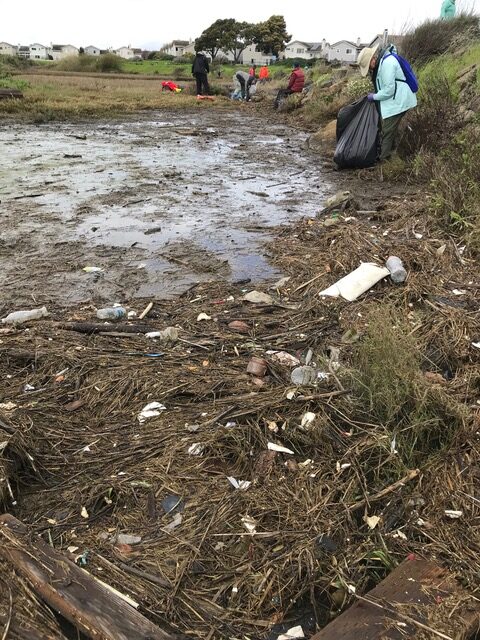
Because while the slough is home to the endangered Ridgway’s Rail, its soil is also home to historic toxic contaminants.
From 1870 to 1950 then California Cap Co., sitting just above Meeker Slough and Stege Marsh, manufactured Mercury Fulminate for the purposes of producing explosives. Around the same time its neighbor, the Stauffer Chemical Company (later known as Zeneca Inc.) manufactured sulfuric acid among other industrial chemicals, leaving behind pyrite cinder waste in its wake.
This history, and the current reality of the soil’s toxicity, has made the issue of dealing with the trash from illegal dumping and stormwater runoff, even more of a mess for nonprofit organizations like GGBA and The Watershed Project, and landowners like The City of Richmond and UC Berkeley, to deal with.

“In 2016 the Department of Toxic Substances Control (DTSC) said we could clean as long as we were careful with the sediment and we followed strict protocol ensuring that our volunteers don’t get soil on their clothes, that we provide cleaning stations, and we have a way to safely sanitize our equipment,” Executive Director of the Watershed Project Juliana Gonzalez said.
The bottom line — safety comes first.
In fact, as part of the City of Richmond’s plan to clean the slough in September, the Public Works Department will submit a 30-day Review Work Plan to DTSC to ensure the plan follows best practices in terms of working in a known toxic environment.
(Golden Gate Bird Alliance reached out DTSC to comment for this article but were unable to speak with a representative about the toxicity of Meeker Slough.) That said, below is a table from “Pollutants of Concern Reconnaissance Monitoring Progress Report, Water Years 2015 – 2020” from the Regional Monitoring Program for Water Quality in the San Francisco Bay.


While the toxic soil seems to have slowed things down, advocacy groups, city and county agencies, and UC Berkeley employees at the Richmond Field Station, have not lost sight of the rails.

“We have very strict rules that we follow to protect rail habitat,” Alicia Bihler, Director for the UC Berkeley Office of Environment, Health and Safety, said. “So that means we pretty much don’t go into the marsh or the slough from February 1st through the end of August to protect breeding season.
Bihler, who oversees UC Berkeley’s environmental protection programs, including restoration work along the property of the UC Berkeley Richmond Field Station, explained that the combination of the endangered rail presence and the toxins creates a complex and sensitive environment.
Just how impactful the contaminants are toward the health and wellbeing of the rail population at Meeker Slough remains unknown.
Back in 2006, a study published in Auk Magazine titled Effects of Predation, Flooding, and Contamination on Reproductive Success of California Clapper Rails in San Francisco Bay, suggests that “the magnitude of the effect of contamination (ex: Mercury) on hatchability varies, between 15% and 30%”, compared to normal hatchability rates of 90% in Ridgways Rails. In the study, Mercury showed up in some eggs from each marsh site, the closest to Meeker Slough being Wildcat Marsh.
And what of the the impact that trash (big or small) has on the Ridgways Rails? There are currently no known gastrointestinal studies for Ridgways Rails and plastic ingestion.
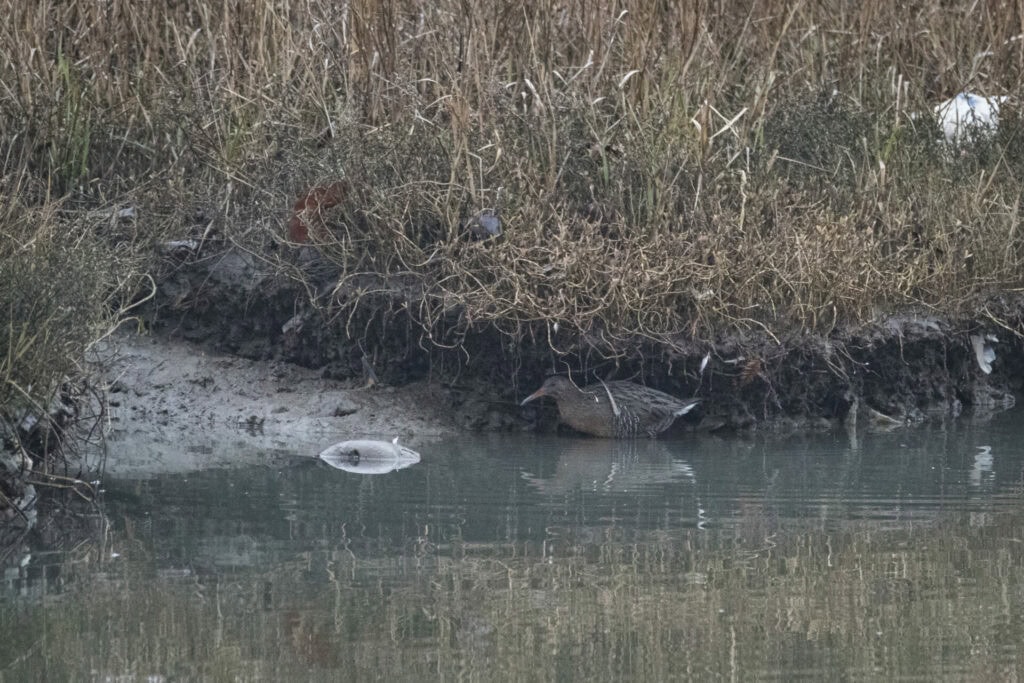
That said, Meeker Slough is more than just rail habitat, it is an entire ecosystem of both flora and fauna that depend on each other to successfully survive and thrive in the channeled mudflat. The waste that makes it into the slough, can be thought of as a kind of secondary human development, displacing places where natural vegetation might better support the system.
“The wildlife deserves better, the area deserves better,” Marina Bay resident Danit Trau said. “We all deserve a better, cleaner natural space.”
Ryan Nakano is GGBA’s Director of Communications and an occasional casual birder.
Jeni Schmedding is the Digital Communications Assistant at GGBA, an Outdoor Leader for Forest and Tree, and a Naturalist for whale watching. She is passionate to advocate for wildlife protection and conservation while also wanting to connect people to nature.
